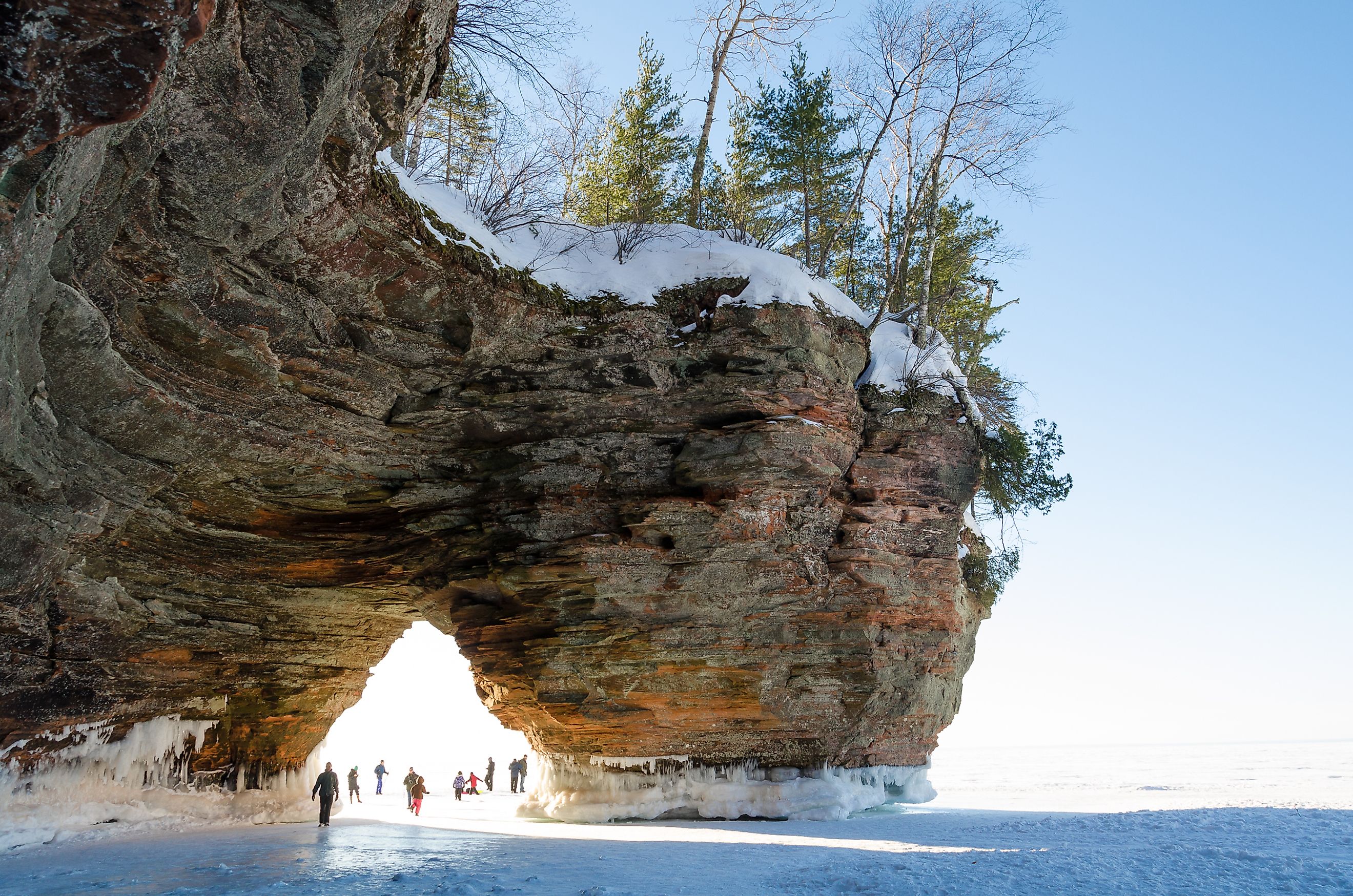
Apostle Islands
The Apostle Islands are a group of 22 islands located in the extreme northern part of the US state of Wisconsin, just off the edge of Bayfield Peninsula on the western waters of Lake Superior. The majority of the islands in the group are situated in Ashland County except for the islands of Eagle, Raspberry, Sand, and York which are located in Bayfield County.
Covering a total land area of 281 km2, the Apostle Islands National Lakeshore comprises 21 Apostle islands along with a 19 km coastline strip on the Bayfield Peninsula. All the islands in the group are acclaimed for their high red sandstone cliffs as well as for the numerous sea caves and arches that form elegant ice-structures during the winter season.
The Islands

The 22 islands in the Apostle Island archipelago are Madeline, Stockton, Gull, Eagle, Outer, Oak, Sand, Basswood, Bear, Michigan, Hermit, Cat, Otter, Manitou, Rocky, Long, Ironwood, York, Raspberry, Devils, South Twin, and North Twin Islands.
Madeline Island is the largest among all the Apostle Islands and is the only island that is not a part of the Apostle Islands National Lakeshore. The island served as a spiritual center for the Indigenous Chippewa people of Lake Superior. The island has a permanent population of about 302 people, which significantly increases during the tourism season, and is also the only island in the archipelago that is open for private ownerships and commercial development purposes. The island’s only town, La Pointe, located on the western part of the island, is also considered to be one of the oldest permanent settlements of the state of Wisconsin. Madeline Island can be accessed by car ferry services which run from the Wisconsin town of Bayfield to the island.
Long Island is part of Sanborn town while the other islands of Ashland County are part of La Pointe town. The four islands of Bayfield County are part of the Bayfield and Russell towns.
Brief History

Geologists have estimated that the red sandstones of the Apostle Island archipelago were formed more than 600 million years ago during the late Precambrian era. The islands have faced repeated glaciations, with the most recent one being approximately 12,000 years ago. Thereafter, as a result of the deglaciation and the subsequent rise of the lake levels, the Apostle Islands were separated from the Bayfield Peninsula to form the archipelago. The islands were named by Jesuit missionaries in the honor of the 12 Apostles.
First Nations peoples, mainly the Anishinaabe, were the first to inhabit these islands. For several centuries, the islands were inhabited by Indigenous nomadic Ojibwa people, who developed innovative agricultural techniques on and around the islands. After the arrival of the Europeans, the islands became a center for fur trade operations.
The Apostle Islands serve as a popular recreation area for kayaking, camping, sailing, fishing, and scuba diving. There are numerous historic lighthouses scattered throughout the islands. Some of the famous lighthouses include the New Michigan Island Lighthouse, Devils Island Lighthouse, Sand Island Lighthouse, and Raspberry Island Lighthouse. Several sea caves are located along the shores of the Apostle Islands, which are visited by many tourists during the winter season, to witness the magnificent frozen structures.
Flora And Fauna

The Apostle Islands are mainly covered by a mixture of hardwood and conifer forests and more than 800 species of plants have been recorded in the National Lakeshore region. The important trees that are found on the island include white cedar, white spruce, balsam fir, birch, aspen, and tamarack.
Some of the notable amphibian and reptile species that are found here are the gray treefrog, American toad, northern leopard frog, spotted salamander, northern red-bellied snake, and the common garter snake. The lakeshore area serves as an important nesting and breeding habitat for numerous avian species like herring gulls, cormorants, herons, swallows, bald eagles, and piping plover. The significant mammals that are found in the islands are black bears, whitetail deer, snowshoe hare, red squirrels, shrews, mice, etc.











